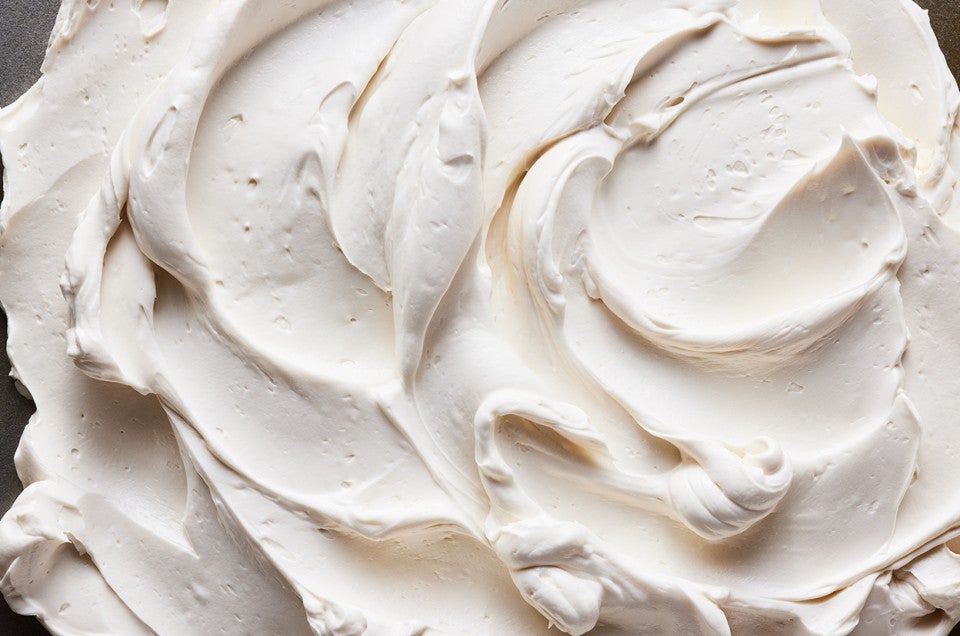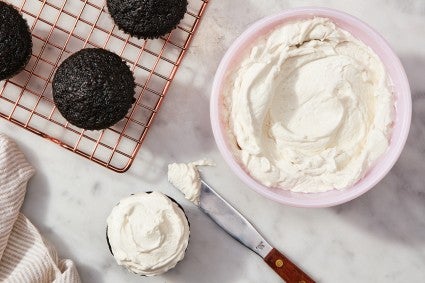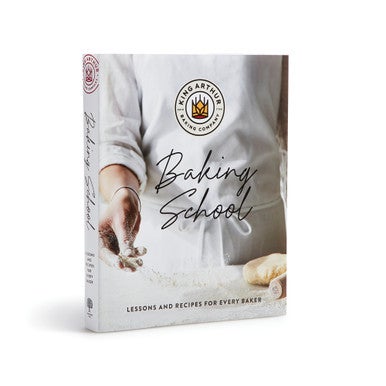


If you’ve only made simple American buttercreams before, attempting a Swiss or Italian buttercream — which are made by first beating egg whites or meringue powder until fluffy and voluminous, then beating in butter bit-by-bit — can feel daunting. But these meringue-based frostings are worth mastering: They can’t be beat for their silky texture and stable structure, and they pipe cleanly and spread smoothly for a professional finish on your cakes.
In contrast to American buttercream, however, Swiss and Italian buttercreams can be a little fussy, as this type of frosting is incredibly temperature-sensitive. But don’t despair: If you’ve followed the recipe exactly and the final frosting isn’t looking quite right, here are tips on how to fix broken buttercream, excerpted from King Arthur’s Baking School cookbook:

You need to let your meringue cool fully before beating in the butter. Maybe you thought you’d waited long enough, but if you’ve beaten the buttercream for 5 minutes after the last addition of butter and it’s still soft and runny, the meringue may have been too warm when you began incorporating the butter. If this happens, transfer the bowl of frosting to the refrigerator or freezer for 5 to 10 minutes, then beat again. Repeat this process until the buttercream is smooth and the correct consistency — smooth, silky, and spreadable.
If you’ve beaten the buttercream for 5 minutes after the last addition of butter and it resembles cottage cheese, the butter (or the meringue) may have been too cold. Hair dryer to the rescue! With the mixer running, gently heat the bottom and sides of the bowl with a hair dryer until the buttercream around the edges just starts to melt. Continue to mix until the buttercream is smooth and creamy. Alternatively, remove the bowl from the mixer, place it over a pot of simmering water for a few seconds, then return it to the mixer, mixing until it is smooth and the correct consistency. Repeat as necessary until you obtain the correct consistency.
If you’ve refrigerated or frozen the buttercream and it’s still solid, allow the buttercream to sit out at room temperature for a few hours or overnight, until it reaches room temperature. Place the buttercream in the bowl of a stand mixer. Proceed with heating and beating as described above.
Find everything you need to make great cakes in our guide on How to Bake Cake. And wondering how much frosting you need for that cake? Check out our post: How much frosting do I need for a cake?

Cover photo (Swiss Buttercream) by Mark Weinberg; food styling by Liz Neily.

